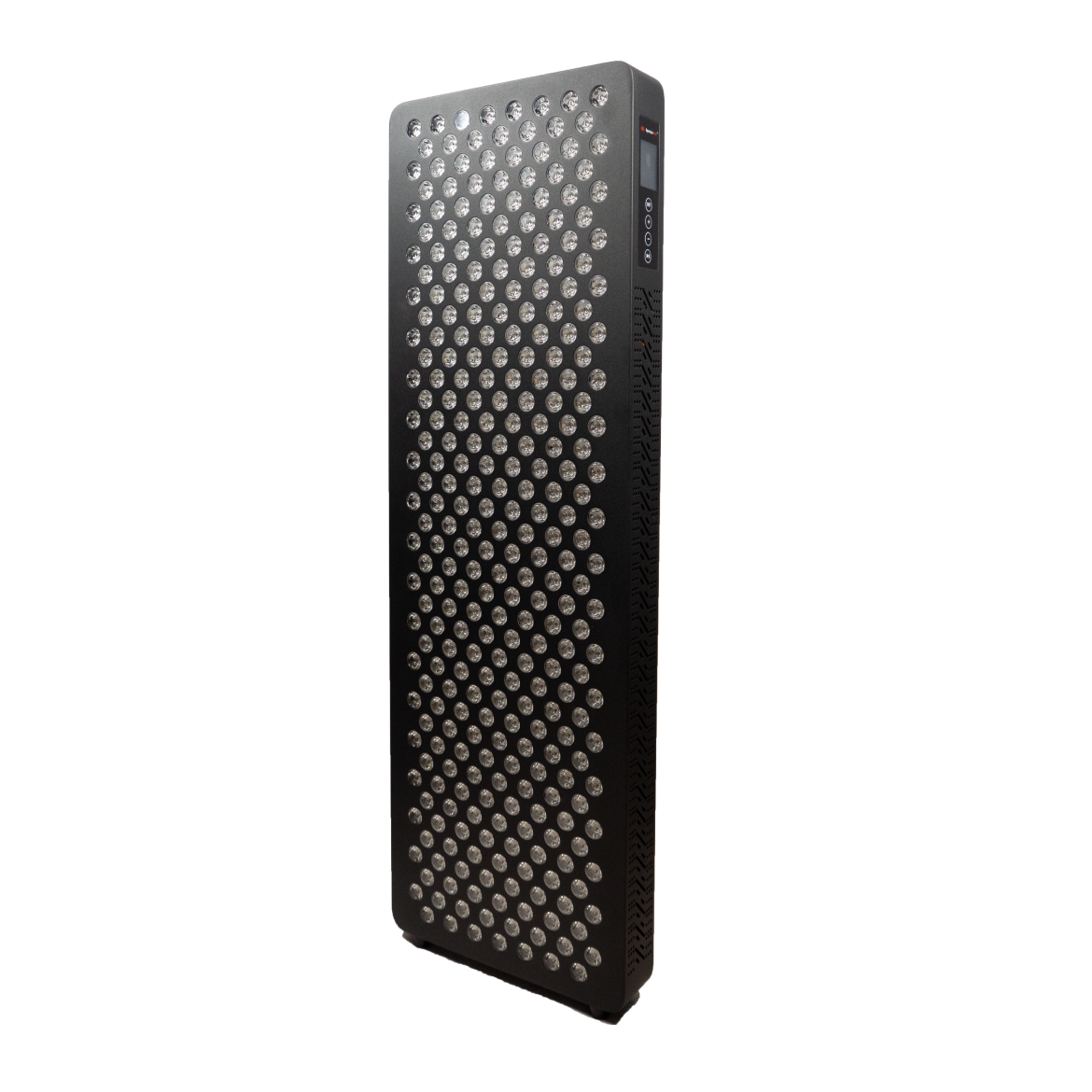Introduction:
In the hunt for better, deeper and more restorative sleep, many are now considering red light therapy.
In today's busy world, good sleep can be hard to come by, leaving people feeling tired and drained. But is red light therapy really effective in improving sleep? Let's take a closer look at how it works and whether it can truly help us get the rest we need.
Understanding Sleep:
Sleep plays a pivotal role in our physical, mental, and emotional well-being.
Yet, in today's fast-paced world, achieving quality sleep can feel like an unattainable luxury.
From the blue light of screens to the stresses of daily life, numerous factors conspire to disrupt our natural sleep-wake cycle, leaving us tossing and turning in the darkness.
What is Red Light Therapy Doing?
Red light therapy, also known as photobiomodulation, harnesses specific wavelengths of light to stimulate cellular activity and promote healing.
While its applications span far and wide, from skincare to pain management, recent research suggests that red light therapy may hold profound implications for sleep health.
How Red Light Therapy Helps With Sleep:
- Melatonin Regulation
- Circadian Rhythm Alignment
- Stress Reduction
- Sleep Architecture Enhancement
- Regulation of Sleep Hormones
- Reduction of Sleep Onset Latency
- Enhancement of Sleep Depth
- Promotion of Sleep Continuity
Melatonin Regulation:
Red light therapy has been shown to modulate melatonin production, the hormone responsible for regulating our sleep-wake cycle.
By exposing the body to red light in the evening, particularly in the hours leading up to bedtime, individuals may experience improved sleep onset and quality.
Circadian Rhythm Alignment:
Our internal body clock, or circadian rhythm, governs the timing of various physiological processes, including sleep.
Red light therapy helps synchronize this internal clock, ensuring that our bodies are primed for restorative sleep at the appropriate times.
Stress Reduction:
Chronic stress and anxiety are common barriers to restful sleep.
Red light therapy's soothing effects on the nervous system can help alleviate stress and promote relaxation, creating an optimal environment for sleep.
Sleep Architecture Enhancement:
Studies suggest that red light therapy may enhance the architecture of sleep, increasing the proportion of deep, restorative sleep stages and reducing sleep disturbances throughout the night.
Regulation of Sleep Hormones:
Red light therapy may help regulate the production of sleep-related hormones such as melatonin, promoting a more synchronised sleep-wake cycle and improving overall sleep quality.
Reduction of Sleep Onset Latency:
By promoting relaxation and reducing pre-sleep arousal, red light therapy may shorten the time it takes to fall asleep, known as sleep onset latency, leading to faster and more efficient transitions into sleep.
Enhancement of Sleep Depth:
Studies suggest that red light therapy may increase the duration and intensity of slow-wave sleep, the deepest and most restorative stage of the sleep cycle, thereby promoting deeper and more restful sleep overall.
Promotion of Sleep Continuity:
Red light therapy may help reduce the frequency and duration of nighttime awakenings, promoting greater continuity of sleep and minimizing disruptions that can impair sleep quality and daytime functioning.
Clinical Evidence and Real Life Testimonials:
While research into red light therapy's effects on sleep is still in its infancy, preliminary studies offer promising findings.
For instance, a randomised controlled trial published in the Journal of Sleep Research found that participants exposed to red light therapy experienced improvements in sleep quality, including reduced wake time after sleep onset and enhanced sleep efficiency.
Moreover, many individuals have reported firsthand experiences of finding relief from sleep difficulties through red light therapy, citing deeper, more restful sleep and waking up feeling refreshed and rejuvenated.
Incorporating Red Light Therapy into Your Sleep Routine:
Integrating red light therapy into your sleep routine is simple and convenient, thanks to the availability of at-home devices and professional treatments offered at wellness centers.
Consistency is key, with regular sessions recommended to reap the full benefits of this gentle yet powerful modality.
Does Red Light Therapy Help with Insomnia?
While research on red light therapy specifically for insomnia is ongoing, preliminary findings are extremely positive and suggest that it are many benefits for individuals struggling with sleep disturbances.
Insomnia, characterized by difficulty falling asleep, staying asleep, or experiencing non-restorative sleep, can have significant impacts on overall health and quality of life.
Red light therapy's ability to modulate melatonin production, regulate circadian rhythms, and promote relaxation may make it a promising adjunctive therapy for managing insomnia.
By creating an optimal environment for restorative sleep and addressing underlying factors contributing to sleep disturbances, red light therapy may help individuals with insomnia achieve better sleep outcomes.
Obviously every individual is different and some people see great results and others dont and it can be case dependent.
As with any sleep disorder, individuals experiencing chronic insomnia should consult with their own doctor to explore comprehensive treatment approaches tailored to specifically what their own circumstances require.
Conclusion:
In conclusion, red light therapy emerges as a promising tool for improving sleep quality and promoting overall well-being.
By using the power of specific wavelengths of light, people can in the comfort of their own homes have access to a new piece of equipment that can allow them to drift effortlessly into the warm hug of a deep and restorative sleep every night.












